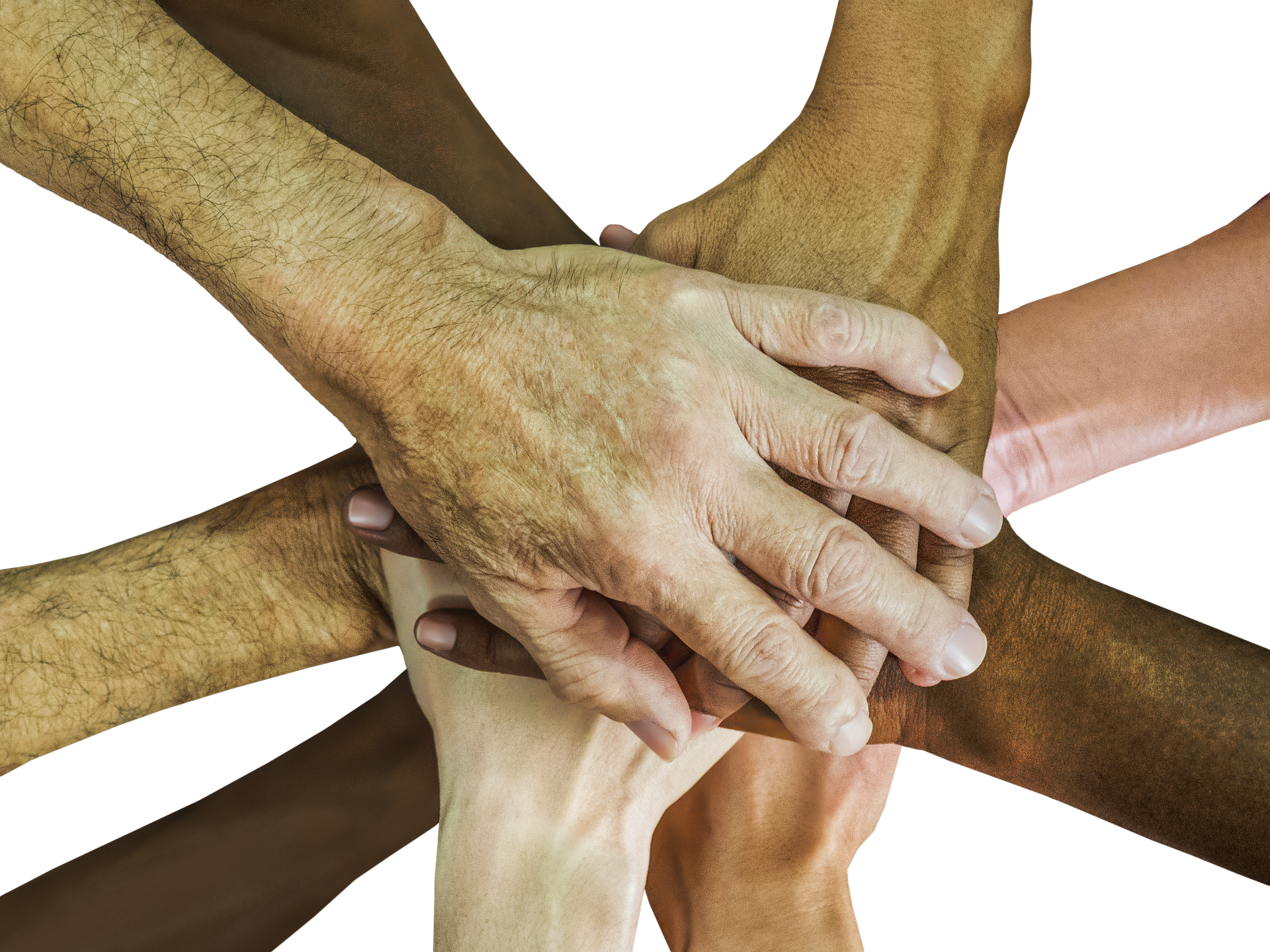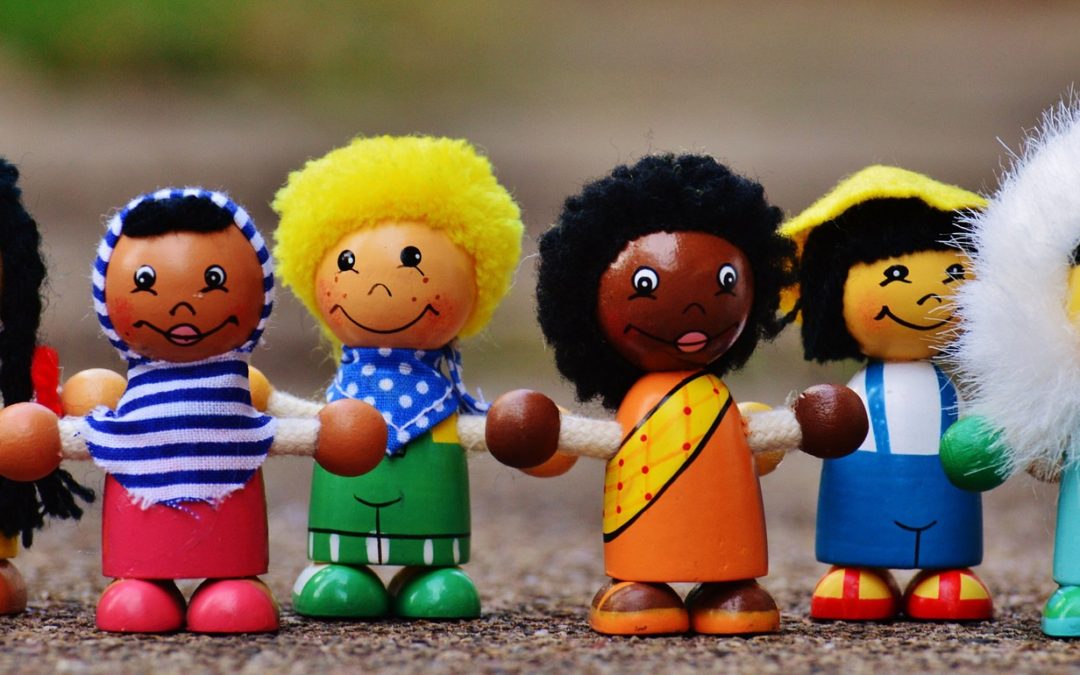I am taking a course from the University of California, Berkeley, called Bridging Differences. For this week, when I could not think of a topic to write about, I decided to write about what I am learning there. It seems like a great way to recap what I am learning and also share some insights with you (in my own words, obviously). I will also add in my own thoughts and that’s where the dog comes in.
Even though we are all humans (at least the ones that can read these words), we have a tendency to gravitate towards those who we see as ‘like us’. We are skeptical and sometimes even hostile towards those who we see as different from us. The main word here is ‘see’. It is how we see them – same or different – that decides whether we gravitate towards them or run away from them.
This basic response has been coded in us over thousands of years of evolution. If we saw something familiar, we knew not to be afraid or react aggressively. When we saw something new or different, we knew that caution was necessary for survival and sometimes aggression too.
Diversity and the Dog

This is exactly how dogs behave too. When they smell a familiar dog from far, they run towards it. If they smell another dog that they have not met before, they stop, sniff around for cues of characteristics and then proceed to growl or approach cautiously. Such a response has been coded in their primal, animal brain too.
However, there is something very natural and basic in the reaction that we see in dogs. They can smell many characteristics of the other dog (especially from their butts or their urine). There is no camouflaging the kind of energy or signal that the other dog is sending out. There is no deception that can be concocted here. A dog cannot perfume his pee to deceive another dog into falling into his trap of friendship before luring him to bite him or jump him.
Humans on the other hand do not seem to have that skill. In fact, the instinct that we did have with regards to assessing the intention of others using energy transfers and vibes is soon fading away in the attempt to prove, be scientific, and this age of reason has not done much for this skill that we did possess (However, this gut instinct can be nurtured back into existence – more on this some other time).
Because we can now never be sure of whether the other person is threatening or not, we resort to other means of deciding whether we will include them or ostracize them from our group. We use factors such as language, accents, color, gender, religion, economic status, political alliances, and other superficial differences to decide how to act; forgetting all the while that at the very core, we are all humans!
The Need for Bridging Differences
Some time back, I first came across my first workshop for diversity and inclusion and I thought to myself, ‘Such a pity that we have to teach humans to be humans’.
However, ironic this aspect might be, the need exists today to learn how to resolve these superficial differences. Firstly, these aspects are not considered superficial by many (and they have a right to their opinion) and secondly, it takes time to really feel the oneness that we all share within us.
In America, the need to bridge differences has almost reached critical levels. Republicans and Democrats cannot see eye to eye and a large proportion of each side believes that the country would be better off if a majority of the other side ‘just died’. Hate crimes are at an all-time high and growing exponentially. People in the government are not able to agree on any policy to such an extent that laws that can be extremely beneficial to all at large are not being passed.
In India, we have prided ourselves on being a secular and tolerant people. However, hate crimes have increased exponentially here too. Most of these, however, are replicas of the west. The corporate world talks about diversity and inclusion workshops and includes aspects such as gender parity, women in boardrooms, LGBTQ community support, disability inclusion, and yet there are gaping holes in the differences that are unique to us, like the caste system!
Here are some reasons for bridging differences that this course suggests:
- Political differences are creating conflicts in families. Dinners are shorter and stiff and those on the opposite sides of the fence refrain from conversing lest the dinner ends in a heated argument.
- Studies have shown that students in racially diverse schools do better
- Hatred, prejudice, and fear of other groups can lead to muscle atrophy and damages the immune system
- Diversity makes us more solution-focused and helps us find creative solutions to situations
- Non-inclusive strategies hurt our common pocket – think of the amount of public money spent in trying to manage protests
- Diversity is good for the bottom line for companies too
What is Bridging Differences (and what it is not)

Bridging differences is a process in which you come out of your comfort zone to actively find common ground with people who may not be like us at first glance or immediate assessment. It is about taking that one step towards the other person while recognizing the shared humanity that you have.
Building bridges requires modesty and humility as you are willing to allow another to have their own opinion, beliefs, and practices. It is not something that can be achieved in one single leap and is often a process that starts with doing some inner work.
Bridging differences does not mean that you have to give up your beliefs, ideas, religion, practices, or anything for that matter. It can also not be achieved with coercion, persuasion, or arguments. One should not be adamant about building bridges when the other person is not ready. This is often the case when they may have been undermined, oppressed, or are dealing with some trauma.
In order to be ready for bridging differences, inner work is essential. This inner work deals with:
- Identifying the stereotypes in your mind
- Figuring out your unconscious bias
- Understanding the difference between discomfort (that you may feel while engaging or in front of a person you see as different) and real danger
- Learning to be comfortable with who you are and knowing that you do not have to give up your beliefs in order to bridge differences or behave inclusively
Once you feel comfortable with the inner work, some external work needs to be done to make progress. External work in the area of bridging differences requires:
- Active listening – check out my post on listening
- Compassionate speaking – the art of sharing your own perspective without making other people defensive
- Finding shared values and identities
- Identifying common goals
All the above can be done with the right kind of communication and once we open those channels of communication (done the right way), the common goals and values, and even identities can take us by surprise. It’s like when you meet someone you think is very different (different religion or race maybe), and then realize (on communication) how she faces the same challenges as a mother (shared identity).
Remember how I mentioned at the beginning of the post that we differentiate based on whether we ‘see’ others as different or similar. When we communicate, we are able to break away stereotypes and SEE the similarities that we have – as mothers, as executives, as parents, as runners, as fitness enthusiasts, as trekkers, as readers, as golfers, as caregivers, as HUMANS!
For me, the ultimate inclusion is to be able to see the same ‘one truth’ that exists in you, in others too; teaching that Advait Vedanta talks about over and over again.
Aham Brahmasmi!
Featured image by Here and now, unfortunately, ends my journey on Pixabay from Pixabay


You are so right! We do gravitate towards people like us. I had never given it much thought! But when we step out of our comfort zone to engage with those unlike us, it makes a huge difference to our way of thinking and conduct.
I realised that travel opens minds a lot if you have the will to engage, be curious, and willing to learn about others.
I also sometimes wonder whether we are (to some extent) creating more bias by talking soooo much about it!
Should be simpler than it is, I feel…but is not!